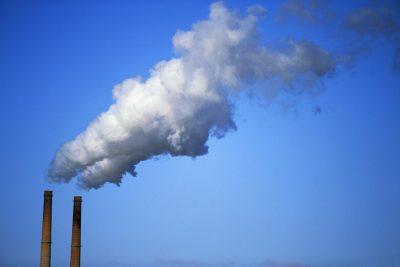Experts discussed how to decarbonize existing commercial buildings in a webinar hosted by the Boston University Institute for Sustainable Energy on Friday.

“Decarbonization of Existing Commercial Buildings” webinar was a part of the Institute for Sustainable Energy of the Future Webinar Series, and discussed decarbonization — meaning to reduce carbon emissions. The event was the first of a two-part series and featured four panelists and a keynote speaker. Part 1 focused on the technical aspects, and Part 2 will be about policy and financial issues of decarbonizing buildings.
“A major issue that the United States and the world faces is how do we decarbonize the emissions from our existing commercial buildings,” Michael Gevelber, a panelist and associate professor in the College of Engineering, said in an interview.
He said Boston University as well as Boston as a whole aim to achieve total decarbonization by 2050 and that decarbonizing buildings play a big role in this feat.
David Nemtzow, Building Technologies Office Director of the U.S. Department of Energy Efficiency and Renewable Energy, discussed the importance of decarbonizing the nation’s buildings and how the DOE is leading this initiative in the keynote address.
“This is one of the most complex energy and environmental issues that we face,” Nemtzow said about decarbonization.
Nemtzow said that buildings currently consume 39% of U.S. energy and contribute 35% of the United States’s CO2 emissions.
Panelist Kurt Roth, senior fellow at the BU Institute for Sustainable Energy, discussed the decarbonization of small and midsize buildings at the event.
Roth talked about “package rooftop units” that are “populating the roofs of big box retail stores in the vast majority of small, medium-sized buildings.” He explained that these are cheaper options but are faulty due to the lack of maintenance.
“There just aren’t cold climate heat pump products that can be dropped in to replace them, they don’t really exist at any kind of scale in the marketplace today,” Roth said.
There are multiple things people can do to increase the efficiency of rooftop units, he added.
“Reduce the amount of outdoor air you take into the building,” Roth said. “You can also do things like onboard fault detection diagnostics. There’s some products out there which help with that, although there could be much more of that done and more faults addressed by those kinds of products.”
Panelist Gayatri Sundar Rajan, a senior in the College of Engineering and Campus Climate Lab researcher, said she presented one of the research talks about decarbonization of large commercial buildings.
“The idea is that if you can decarbonize or reduce the carbon emissions of the sector, then you can significantly improve the sustainability of your campus,” she said in an interview, pointing to how buildings contribute to roughly 40% of gas emissions on campus.
Sundar Rajan shared what her research team has discovered while looking to decarbonizing BU. In her research, Sundar Rajan found that heat pumps are more efficient but more expensive than boilers, so her team came up with a hybrid system.
“What we’re able to do here is we’re able to reduce the capital cost of our total retrofit while maintaining the thermal comfort throughout the year,” Sundar Rajan said in the panel.
Panelist Mike Walters, a principal at the engineering firm Salas O’Brien, talked about developing systems to decarbonize on a large scale.
Walters showed some examples of various locations that the firm has helped implement decarbonization projects: Ball State University, Ford Motor Company and Miami University in Ohio.
Ball State University is “100% a ground source heat pump conversion project.” The system spans 47 buildings, and they are halfway toward their goal of decarbonizing the campus within the next 10 years.
The panelists answered audience questions throughout the webinar and after the presentations.
“I hope the audience understands how accessible heating electrification is and how it can be customized to a given building and a given community’s needs,” said Rajan.



























































































































